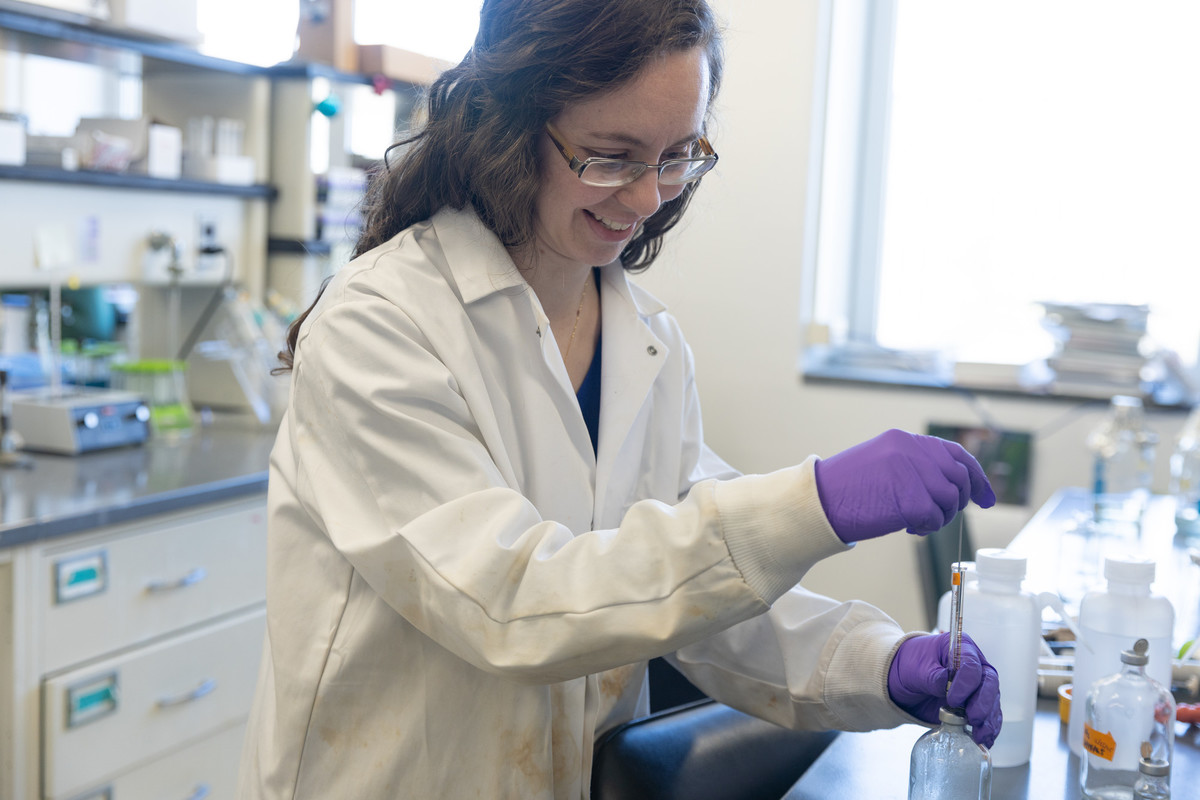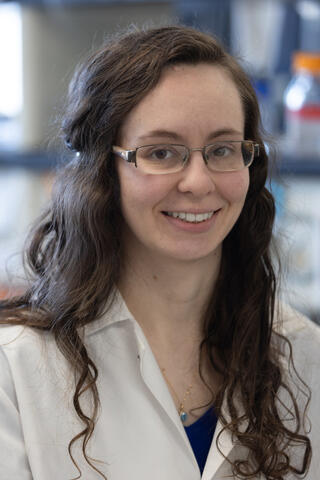
Elise Rivett was researching nitrous oxide (N20) when she discovered a problem with the model long used to trace the source of this potent greenhouse gas.
As a biochemist, Rivett lacked a background in mathematics. Undaunted, she developed a new equation and figured out the coding to update the model.
“Scientifically, what she achieved was nothing short of outstanding, especially when one recognizes that Elise taught herself the complex math and statistics needed to address this question,” said Rivett’s supervisor Eric Hegg, a professor of biochemistry and molecular biology at Michigan State University and co-investigator with the Great Lakes Bioenergy Research Center.
In recognition of her research accomplishments and engagement with the community, Elise Rivett is the winner of the Great Lakes Bioenergy Research Center’s 2025 Jennifer L. Reed Bioenergy Science Award.

Originally called the GLBRC Early Career Woman in Bioenergy Sciences Award, the award was established in 2018 to recognize the impacts of early career scientists on the success of the center. It was later renamed in honor of Jennie Reed, a professor of chemical and biological engineering at UW–Madison who served as a GLBRC co-investigator until her death in 2020.
Rivett earned a PhD in biochemistry and molecular biology in Hegg’s lab, where she is currently a postdoctoral researcher studying N20 biosynthesis.
Nitrous oxide is produced by soil microbes that metabolize nitrogen in agricultural fertilizers. While nitrogen is necessary for plants to grow, N20 in the atmosphere can trap more than 300 times as much heat as carbon dioxide, and it is the most significant threat to the Earth’s ozone layer.
Understanding the mechanisms behind N20 production is key to tracing and ultimately limiting these emissions. To identify the source, scientists can analyze the isotopic signatures, using the number of neutrons on each atom as a sort of fingerprint.
There was just one problem: The existing model to calculate position specific isotope effects was based on reactions that involved the conversion of one reactant into one product, but N20 synthesis involves the conversion of two reactants into one product.
Rivett realized she needed a new model, so she figured out how to build it.
“It was a little intimidating,” Rivett said, “But there were some really good books online that I went through to learn the basics. This was my first time coding, but I was able to learn how to do it.”
The results are detailed in a 2024 paper.
“I think this manuscript will be hugely impactful,” Hegg wrote. “I strongly suspect that her model will be used and cited for years to come.”

Rivett is now preparing another manuscript on applying the new model to a different N20 system.
In addition to her contributions to the field, Hegg notes Rivett has trained three undergraduate research assistants and one graduate student in molecular biology techniques
“Although Elise is quiet and shy and therefore often overlooked, she has had a huge positive impact on my lab and the GLBRC,” Hegg said. “She is helpful and welcoming to all people, and she always displays a huge amount of positivity. In short, she raises up everyone, in all ways.”
Rivett hopes her experience will inspire others to take on new challenges.
“Don’t be afraid to try and learn new things, but also know when to ask for help,” Rivett said. “I got help from a statistician to make sure we’d done the correct statistical tests.”